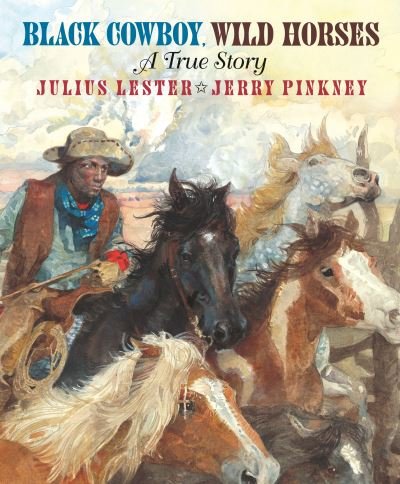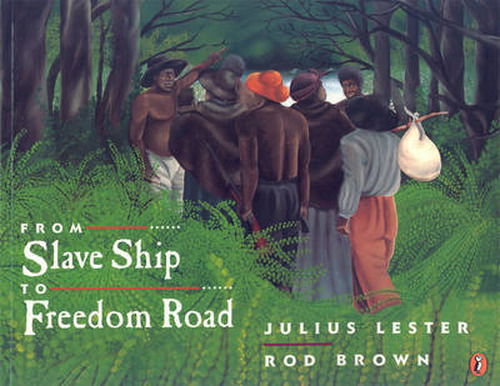
Tell your friends about this item:
Uncle Remus: the Complete Tales
Julius Lester
Uncle Remus: the Complete Tales
Julius Lester
Brief Description: Originally written down by Joel Chandler Harris, Uncle Remus tales were first published more than 100 years ago and serve as the largest collection of African-American folklore. In this four-book series, Julius Lester masterfully retains the flavor of the tales, while dropping the heavy dialect of the originals and adding a contemporary flair. Color illustrations throughout. Brief Description: Reprint in one volume of works originally published separately, 1987-1994. Brief Description: A collection of Uncle Remus African American folktales updated with modern references. Marc Notes: Includes index.; Reprint in one volume of works originally published separately, 1987-1994. Publisher Marketing: Brer Rabbit is causing trouble again for his fellow creatures Brer Fox, Brer Wolf, and the rest--this time in an omnibus edition that brings together all the stories from Tales of Uncle Remus, More Tales of Uncle Remus, Further Tales of Uncle Remus, and Last Tales of Uncle Remus. The Uncle Remus tales, originally written down by Joel Chandler Harris, were first published over a hundred years ago, and serve as the largest collection of African-American folklore. In this four-book series, Julius Lester masterfully retains the flavor of the tales, while dropping the heavy dialect of the Harris originals and adding contemporary language and references-- ensuring that the stories will be understood and enjoyed by new generations of readers. And, of course, the stories are beautifully illuminated by the slyly humorous full-color and black-and-white art of Jerry Pinkney. The result is a treasure of a volume that will delight all ages and belongs on every shelf. Review Citations:
Publishers Weekly 11/08/1999 pg. 70 (EAN 9780803724518, Hardcover)
Hornbook Guide to Children 07/01/1999 pg. 112 (EAN 9780803724518, Hardcover)
Wilson Children's Catalog 96 01/01/2000 pg. 12 (EAN 9780803724518, Hardcover)
Ingram Advance 10/01/1999 pg. 97 (EAN 9780803724518, Hardcover)
Wilson Children's Catalog 01/01/2001 pg. 111 (EAN 9780803724518, Hardcover)
Hornbook Guide to Children 01/01/2000 pg. 112 (EAN 9780803724518, Hardcover)
Wilson Middle/Junior Hi Catalo 01/01/2005 pg. 146 (EAN 9780803724518, Hardcover)
Wilson Children's Catalog 01/01/2006 pg. 135 (EAN 9780803724518, Hardcover)
Wilson Middle/Junior Hi Catalo 01/01/2009 pg. 196 (EAN 9780803724518, Hardcover)
Wilson Children's Catalog 01/01/2010 pg. 183 (EAN 9780803724518, Hardcover)
Contributor Bio: Lester, Julius Julius Lester is the author of the Newbery Honor Book To Be a Slave, the Caldecott Honor Book John Henry, the National Book Award finalist The Long Journey Home: Stories from Black History, and the Coretta Scott King Award winner Day of Tears. He is also a National Book Critics Circle nominee and a recipient of the Boston Globe-Horn Book Award. His most recent picture book, Let's Talk About Race, was named to the New York Public Library's "One Hundred Titles for Reading and Sharing." In addition to his critically acclaimed writing career, Mr. Lester has distinguished himself as a civil rights activist, musician, photographer, radio talk-show host, and professor. For thirty-two years he taught at the University of Massachusetts at Amherst. He lives in western Massachusetts. Contributor Bio: Pinkney, Jerry Jerry Pinkney is the illustrator of more than a hundred books for children. A five-time winner of both the Caldecott Honor and the Coretta Scott King Award, he has been recognized with numerous other honors, taught illustration and conducted workshops at universities across the country, and created art for the United States Postal Service's Black Heritage stamps. Books Mr. Pinkney has illustrated include The Ugly Duckling, John Henry, The Nightingale, and Noah's Ark. The father of four grown children, he lives and works in Croton-on-Hudson, New York, in a nineteenth-century carriage house with his wife, author Gloria Jean. In His Own Words..."I grew up in a small house in Philadelphia, Pennsylvania. I was a middle child of six. I started drawing as far back as I can remember, at the age of four or five. My brothers drew, and I guess in a way I was mimicking them. I found I enjoyed the act of putting marks on paper. It gave me a way of creating my own space and quiet time, as well as a way of expressing myself. You can imagine six children competing for attention and to be heard. I would sit, watching and drawing."In first grade I had the opportunity to draw a large picture of a fire engine on the blackboard. I was complimented and encouraged to draw more. The attention felt good, and I wanted more. I was not a terrific reader or adept speller in my growing-up years, and I felt insecure in those areas. Drawing helped me build my self-esteem and feel good about myself, and, with hard work, I graduated from elementary school with honors."I attended an all-black elementary school, and I gained a strong sense of self and an appreciation of my own culture there. But Roosevelt Junior High was integrated. There I had many friends, both white and black, at a time when there was little mixing socially in school. There the spark for my curiosity about people was lit. You can see this interest and fascination with people of different cultures throughout my work."My formal art training started at Dobbins Vocational High School, and upon graduation I received a scholarship to the Philadelphia Museum College of Art. My major was advertising and design. The most exciting classes for me were drawing, painting, and printmaking. It is no wonder I turned to illustrating and designing books. For me the book represents the ultimate in graphics: first, as a designer, considering space, page size, number of pages, and type size; then, as an illustrator, dealing with the aesthetics of line, color, and form."There were three books that somehow magically came into my possession in the early sixties: The Wind in the Wows, illustrated by Arthur Rackham; The Wonder Clock, illustrated by Howard Pyle; and Rain Makes Applesauce, illustrated by Marvin Bileck. You can see those influences in my art today. Later, my work was greatly influenced by such African American artists as Charles White, Romare Bearden, and Jacob Lawrence."From the very beginning of my career in illustrating books, research has been important. I do as much as possible on a given subject, so that I live the experience and have a vision of the people and places. To capture a sense of realism for characters in my work, I use models that resemble the people I want to portray. My wife, Gloria Jean (also an author), and I keep a closetful of old clothes to dress up the models, and I have the models act out the story. Photos are taken to aid me in better understanding body language and facial expressions. Once I have that photo in front of me I have freedom, because the more you know, the more you can be inventive."For illustrating stories about animals, I keep a large reference file of over a hundred books on nature and animals. The first step in envisioning a creature is for me to pretend to be that particular animal. I think about its size and the sounds it makes, how it moves (slowly or quickly), and where it lives. I try to capture the feeling of the creature, as well as its true-to-life characteristics. There are times when the stories call for the animals to be anthropomorphic, and I've used photographs of myself posing as the animal characters."It still amazes me how much the projects I have illustrated have given back to me in terms of personal and artistic satisfaction. They have given me the opportunity to use my imagination, to draw, to paint, to travel through the voices of the characters in the stories, and, above all else, to touch children."
| Media | Books Hardcover Book (Book with hard spine and cover) |
| Released | October 1, 1999 |
| ISBN13 | 9780803724518 |
| Publishers | Dial Books |
| Genre | Ethnic Orientation > African American |
| Pages | 720 |
| Dimensions | 167 × 236 × 50 mm · 1.54 kg |
More by Julius Lester
See all of Julius Lester ( e.g. Paperback Book , Hardcover Book and Book )



![Cover for Julius Lester · Let's Talk About Race (Paperback Book) [Reprint edition] (2020)](https://imusic.b-cdn.net/images/item/original/266/9780064462266.jpg?julius-lester-2020-let-s-talk-about-race-paperback-book&class=scaled&v=1409920303)
![Cover for Julius Lester · Pharaoh's Daughter: A Novel of Ancient Egypt (Paperback Book) [Reprint edition] (2009)](https://imusic.b-cdn.net/images/item/original/628/9780152066628.jpg?julius-lester-2009-pharaoh-s-daughter-a-novel-of-ancient-egypt-paperback-book&class=scaled&v=1415335300)
![Cover for Julius Lester · Tales of Uncle Remus (Puffin Modern Classics): the Adventures of Brer Rabbit (Paperback Book) [Reissue edition] (2006)](https://imusic.b-cdn.net/images/item/original/202/9780142407202.jpg?julius-lester-2006-tales-of-uncle-remus-puffin-modern-classics-the-adventures-of-brer-rabbit-paperback-book&class=scaled&v=1415335299)
![Cover for Julius Lester · Time's Memory (Paperback Book) [First edition] (2006)](https://imusic.b-cdn.net/images/item/original/973/9780374375973.jpg?julius-lester-2006-time-s-memory-paperback-book&class=scaled&v=1415335299)
![Cover for Julius Lester · To Be a Slave - Puffin Modern Classics (Paperback Book) [Reissue edition] (2005)](https://imusic.b-cdn.net/images/item/original/860/9780142403860.jpg?julius-lester-2005-to-be-a-slave-puffin-modern-classics-paperback-book&class=scaled&v=1409892733)
![Cover for Julius Lester · The Autobiography of God: a Novel (Paperback Book) [First edition] (2005)](https://imusic.b-cdn.net/images/item/original/489/9780312348489.jpg?julius-lester-2005-the-autobiography-of-god-a-novel-paperback-book&class=scaled&v=1409653264)

![Cover for Julius Lester · To Be a Slave (Paperback Book) [English Language edition] (2000)](https://imusic.b-cdn.net/images/item/original/015/9780141310015.jpg?julius-lester-2000-to-be-a-slave-paperback-book&class=scaled&v=1409775064)

![Cover for Julius Lester · Tales of Uncle Remus: the Adventures of Brer Rabbit (Paperback Book) [Reprint edition] (1999)](https://imusic.b-cdn.net/images/item/original/475/9780141303475.jpg?julius-lester-1999-tales-of-uncle-remus-the-adventures-of-brer-rabbit-paperback-book&class=scaled&v=1409975509)
![Cover for Julius Lester · Black Folktales (Paperback Book) [1st Evergreen Ed edition] (1994)](https://imusic.b-cdn.net/images/item/original/420/9780802132420.jpg?julius-lester-1994-black-folktales-paperback-book&class=scaled&v=1409822560)